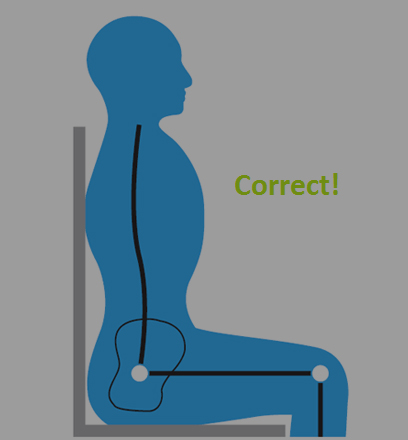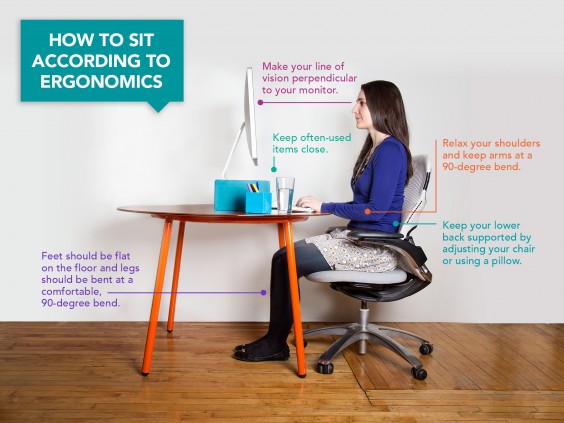
Editors NOTE :
ASCO uses locally sourced materials that DON’T OFF GAS. WE make about 98% of the materials in all our products – to ensure that when OUR name goes on the product – YOU can be assured of Quality
Just as manufacturers are being pressured to remove flame retardant chemicals from children’s clothing, bedding and furniture, the pressure has been mounting on makers of upholstered household furniture.
Instead, the chemicals used to make upholstery foam less flammable brought their own problems—problems more immediate and more common than those rare instances of fire. Those toxic chemicals, shed into the air by sofas and other furniture containing the foam, were linked to a host of health problems including fertility issues, neurological deficits, developmental delays and cancer. American infants were found to have extremely high concentrations of fire retardants in their blood compared to those in other countries, according to a study sponsored by the Environmental Working Group. And when they did burn, the fumes were highly toxic and dangerous.
So just as manufacturers are being pressured to remove flame retardant chemicals from children’s clothing, bedding and furniture, the pressure has been mounting on makers of upholstered household furniture. Organizations like Safer Chemicals, Healthy Families have been leaning on manufacturers through its Mind the Store campaign.
That campaign is paying off. The group is reporting that some of the U.S.’s largest furniture retailers have agreed to phase out the chemicals, although the companies aren’t necessarily saying what and when. The country’s largest furniture retailer/manufacturer Ashley Furniture has agreed to eliminate them but hasn’t announced a timetable to do so. Ashley’s announcement came in response to a letter from the Safer Chemicals, Health Families Mind the Store campaign.
“For years, consumers were saddled with few safe choices when they wanted to buy a couch or other foam-padded furniture,” said Mind the Store campaign director Mike Schade. “Thankfully big retailers are beginning to remove toxic flame retardants. The nation’s top furniture retailer Ashley has recognized that these toxic flame retardant chemicals are not necessary and will be manufacturing and selling furniture products that are safer as they meet the new California flammability standards. But customers want and have a right to know what they are buying. It’s vital Ashley take the next step by announcing a clear public timeframe for phasing out these chemicals in furniture foam and fabrics.”
Last week, the Chicago Tribune reported that Crate and Barrel, Williams-Sonoma’s Pottery Barn and West Elm, and Room and Board have mostly eliminated the toxic chemicals already, and that Futon Shop, IKEA, La-Z-Boy, Scandinavian Designs and Walmart have told their manufacturers to stop using the chemicals. Other companies such as Pier 1 did not respond to inquiries.
“The inconsistent messages mean consumers must ask retailers pointed questions if they want to ensure a particular couch or chair doesn’t contain flame retardants linked to cancer, developmental problems, reduced IQ and impaired fertility,” reported the Tribune.
California was the impetus for the addition of the chemicals to upholstered furniture and now it’s the impetus for their removal. Furniture companies began loading sofas with flame retardant upholstery foam after the state passed TB-117 in 1975. That law required the foam to meet a certain level of resistance to an open flame, providing home residents with a window of escape in case of fire. Since California is such a big market, companies just added it to all their furniture.
But evidence emerged over the years that not only were the chemicals escaping into the air and causing potential health problems but they weren’t even that effective in fending off fires. Public sentiment turned against them. In late 2013, California passed new flammability standards which kicked in at the beginning of this month. While not banning flame retardants, they no longer require that furniture be resistant to open flame but only to smoldering cigarettes. Most upholstery fabrics meet that standard without chemicals, eliminating the need for fire-resistant foam underneath. For greater consumer protection, the state later added a requirement that products containing the chemicals be labeled.
The California law was challenged by Chemtura Corp., one of the world’s largest makers of chemical flame retardants, but its challenge was dismissed by a judge in California in August who said its reasoning would lead to “absurd results.” Chemtura, which devoted $23 million to lobbying against the new standards over a five-year period and defeated five previous failed efforts to reform the California standards, is most likely concerned with another result: the hit to its profits.
“Eliminating toxic flame retardant chemicals makes our homes safer while improving our health. The industry is responding, but with varying degrees of success to consumers. We urge other leading furniture retailers to adopt policies with clear timeframes to phase out these unnecessary and dangerous chemicals,” said Schade.
Source : ecowatch.com

Angela Wright is a world-renown color psychologist who has developed a scientifically-tested theory of color named the color affects system. She has also written a popular book on color psychology, and consulted for a wide range of companies like Shell, Motorola, Proctor and Gamble, British Telecom, The Body Shop, and Unilever. Angela has been studying how color affects a person’s behaviour for about 40 years, and it’s safe to say that if there’s anyone who knows color, it’s her. She also has one of the most awesome English accents I’ve ever heard, but that’s beside the point.
Angela’s work has shown that while a person’s personality affects how they interpret color, color influences everyone universally, and on a very basic level, color is deeply scientific.
“We’re always surrounded by lots of colors. Color travels to us on wavelengths of photons from the sun. And when they strike a colored object, that object absorbs only the wavelengths that match its own atomic structure, and they reflect the rest, and that’s what we see. So the different wavelengths strike the eye in different ways. In the retina, they are converted into electrical impulses that pass to the part of the brain known as the hypothalamus, which governs our endocrine system and hormones, and much of our activity.”
Took the words right out of my mouth.
The bottom line: color profoundly affects your behaviour.

Interestingly, Angela mentioned that it is not a color itself that affects your behaviour. Her research has shown that it’s how intense a color is that affects how you respond to it.
“What defines whether a color is stimulating or soothing is not the color, it’s the intensity. A strong bright color will stimulate, and a color with low saturation will soothe.”
I put together the picture below to illustrate this concept. The colors on the left are highly-saturated versions of blue, yellow, red, and green (which you can combine to make any other color except white and black), and they’re much more stimulating then their respective lowly-saturated counterparts on the right.

Research has also shown that each color affects a different part of us. (And this isn’t a feng shui thing or anything like that, this is pure science, baby.) “The four psychological primaries are: red, blue, yellow, and green. And they affect the body (red), the mind (blue), the emotions, the ego, and self-confidence (yellow), and the essential balance between the mind, the body, and the emotions (green).” Interestingly, when you combine more than one color, you get the effects of both of them. For example, if you combine a highly-saturated yellow with a highly-saturated blue, you will get a color that stimulates both your emotions (yellow) and mind (blue).


If you Google “the most productive color”, every result seems to suggest that blue is the most “productive” color. Angela called this an “oversimplification”.
If you need to stimulate your mind, then yes, blue would likely make you the most productive. “If you’re an accountant, blue probably would make you more productive. But not everybody is an accountant.”
If you do mind-work all day, Angela recommends painting your office blue, but spicing it up with a bit of orange so that you introduce a bit of emotion into your mind-stimulating room. “If you have a blue office, you need to put a bit of orange in there to introduce a bit of balance, a bit of emotion, so that you’re not a cold bureaucrat.”

“If you’re a designer, and you want creativity, blue isn’t going to be the color for you. Yellow is a better color”, because it stimulates your ego and spirits, and makes you more optimistic.
“It takes guts to be creative and come up with something new – that’s why yellow works in that environment.”
If you want to be more productive doing something physical, red would make you more productive than either blue or yellow, because it stimulates you physically. If you’re hiring a bunch of guys to build you a house, for example, “blue isn’t going to be a lot of help to you – you want the red for physical strength and stimulus”.
If you’re in an environment where having a strong sense of balance is the most important, green might just be the color that makes you the most productive. As well, “because it’s so balanced, calming, and reassuring, it’s great to use around anywhere money’s changing hands”. On the flip side, though, “it can be very stagnant and inert”, so an “action man, who loves red, is going to find green quite a strain”.
To determine which color to paint your surroundings, first narrow down which main color (or combination of colors) will work the best in your situation by deciding whether you want to affect your mind, emotions, body, or balance.
Then, pick a specific hue of that color. Naturally, keep in mind whether you want the color to stimulate or soothe you, by picking either a highly-saturated or lowly-saturated hue. Angela provided me with some advice for picking the right shade after that.
“The best advice I can ever give anybody in general is to point out that we were all born with a very accurate sense of color in general, and our kind of color in particular. If we hadn’t, we wouldn’t have survived evolution as we did.” As an example, evolution has taught us that green is a stable, balanced color – it is the sign of life and vitality, after all – and it is one of the reasons we see green as such a ‘balanced’ color.
Interestingly, at the same time, color is both very scientific and very personal. Angela recommends going with your gut, but only after determining which part of you that you’d like to affect. “Actually – you will know the colors that make you feel the most productive. It is different for everybody.”
Another tip: colors hardly ever exist in isolation; they’re usually surrounded by other colors. “Color works exactly the same way as music – as Thelonius Monk said, ‘there are no wrong notes’. Music and color work in the same way. There are no wrong colors either. It’s how you use them.” A color or musical note “doesn’t actually evoke much of an emotional response until it’s put with other colors, or other notes. And then, in both cases, whether you get a positive or negative emotional reaction depends on the relationship between the colors or the notes.”
“I cannot think of any circumstances in which we would be confronted by one color in isolation.”
Source : alifeofproductivity.com

Don’t let this infographic fool you—we know sitting can be bad for our health. It’s been linked to an increased risk for cardiovascular disease, diabetes, and even cancer. Not to mention, sitting for long periods of time can cause your muscles to become inactive, and has you burning one calorie a minute, a third of what it would be if you were walking . And that’s even when you have good posture!
But most of us don’t even have good posture. We’re sitting like contortionists and twisted pretzels, setting ourselves up for a lifetime of pain and injuries. And although standing desks (or even treadmilll desks) are trendy, they haven’t become the office norm just yet—making sitting the majority of the day pretty inevitable.
To avoid the scary consequences of days spent on our rears, we teamed up with Alyx Brown, a chiropractor at Manhattan’s Urban Wellness Clinic, to find the best way to sit at our desks.

It’s important to have your eyes in line with the area of the screen you focus on the most, whether that’s the top (if you’re sending lots of emails), or the bottom (if you’re writing a bunch of code). Looking down at your screen puts excess strain on your neck, which leaves you vulnerable to injuries such as cervical disc herniation, cervical strains, and headaches. Stacking books under your monitor is a simple trick if you need to raise your screen to be at eye level. And if you happen to be a multi-monitor worker, make sure you apply this tip to the monitor you use the most—the last thing you want is an injury from looking sideways all day.
Anything that you constantly use (think your phone, mouse, or water bottle) can be a stressor on your body if you’re always reaching out to grab it. Instead of forcing your body to overwork (and be in an uncomfortable position), keep these must-use items within a foot.
When your arms are stretched and extended, your shoulders actually start to rotate forward, causing you to lose strength in your upper back. To avoid shoulder injuries and chronic upper back pain, keep your arms at a comfortable 90-degree angle in a nice, neutral resting position. Chairs come with armrests for a reason, so don’t be afraid to let them lend you a helping hand!
You want your back to be comfortable and supported, with a small curve in the lumbar spine where your natural lower back (or lordotic curve) is. Without support, the back tends to get too much of a curve in the opposite direction—what’s known as kyphosis, or more commonly, hunchback—leaving the lower back perfectly exposed to disc herniation and chronic postural lower back sprains and strains (the most common injuries Brown sees). If you don’t have a chair that can provide support, get creative! Pillows and jackets are the perfect solution to such a problem.
When your legs are crossed or just your toes are touching the floor, you’re putting unnecessary stress on large supportive muscles and hampering proper blood flow (hello, pins and needles). Even little things—like keeping your legs crossed all day long—can lead to chronic pain. It’s of course OK to cross your legs every once in a while, but it’s important to be aware of your body position.
While seated, you never want to be reaching or leaning forward. Why? Well here’s a fun fact: For every inch that the head comes forward, the spine feels like is has taken on an extra 10 pounds—bringing on some major strain for your muscles.
Little changes to your posture matter. Bad sitting habits—from slouching to crossing your legs—can lead to serious injuries and chronic pain. Fortunately, most of these issues are preventable, and regardless of if you’re big or small, there’s a creative way to make your desk setup and posture a bit better. (There’s zero shame is stacks of printer paper people!)
It won’t feel awesome at first—we know the ideal posture is rarely the most comfortable—but that doesn’t mean you should give in to your long-standing (er, sitting) habits. Try slowly incorporating these changes (i.e. five minutes every half hour at first) to get your body adjusted to a healthier posture, and over time, sitting properly won’t feel awkward at all. You better believe your body will thank you.
Source : greatist.com

Don’t let this infographic fool you—we know sitting can be bad for our health. It’s been linked to an increased risk for cardiovascular disease, diabetes, and even cancer. Not to mention, sitting for long periods of time can cause your muscles to become inactive, and has you burning one calorie a minute, a third of what it would be if you were walking . And that’s even when you have good posture!
But most of us don’t even have good posture. We’re sitting like contortionists and twisted pretzels, setting ourselves up for a lifetime of pain and injuries. And although standing desks (or even treadmilll desks) are trendy, they haven’t become the office norm just yet—making sitting the majority of the day pretty inevitable.
To avoid the scary consequences of days spent on our rears, we teamed up with Alyx Brown, a chiropractor at Manhattan’s Urban Wellness Clinic, to find the best way to sit at our desks.

It’s important to have your eyes in line with the area of the screen you focus on the most, whether that’s the top (if you’re sending lots of emails), or the bottom (if you’re writing a bunch of code). Looking down at your screen puts excess strain on your neck, which leaves you vulnerable to injuries such as cervical disc herniation, cervical strains, and headaches. Stacking books under your monitor is a simple trick if you need to raise your screen to be at eye level. And if you happen to be a multi-monitor worker, make sure you apply this tip to the monitor you use the most—the last thing you want is an injury from looking sideways all day.
Anything that you constantly use (think your phone, mouse, or water bottle) can be a stressor on your body if you’re always reaching out to grab it. Instead of forcing your body to overwork (and be in an uncomfortable position), keep these must-use items within a foot.
When your arms are stretched and extended, your shoulders actually start to rotate forward, causing you to lose strength in your upper back. To avoid shoulder injuries and chronic upper back pain, keep your arms at a comfortable 90-degree angle in a nice, neutral resting position. Chairs come with armrests for a reason, so don’t be afraid to let them lend you a helping hand!
You want your back to be comfortable and supported, with a small curve in the lumbar spine where your natural lower back (or lordotic curve) is. Without support, the back tends to get too much of a curve in the opposite direction—what’s known as kyphosis, or more commonly, hunchback—leaving the lower back perfectly exposed to disc herniation and chronic postural lower back sprains and strains (the most common injuries Brown sees). If you don’t have a chair that can provide support, get creative! Pillows and jackets are the perfect solution to such a problem.
When your legs are crossed or just your toes are touching the floor, you’re putting unnecessary stress on large supportive muscles and hampering proper blood flow (hello, pins and needles). Even little things—like keeping your legs crossed all day long—can lead to chronic pain. It’s of course OK to cross your legs every once in a while, but it’s important to be aware of your body position.
While seated, you never want to be reaching or leaning forward. Why? Well here’s a fun fact: For every inch that the head comes forward, the spine feels like is has taken on an extra 10 pounds—bringing on some major strain for your muscles.
Little changes to your posture matter. Bad sitting habits—from slouching to crossing your legs—can lead to serious injuries and chronic pain. Fortunately, most of these issues are preventable, and regardless of if you’re big or small, there’s a creative way to make your desk setup and posture a bit better. (There’s zero shame is stacks of printer paper people!)
It won’t feel awesome at first—we know the ideal posture is rarely the most comfortable—but that doesn’t mean you should give in to your long-standing (er, sitting) habits. Try slowly incorporating these changes (i.e. five minutes every half hour at first) to get your body adjusted to a healthier posture, and over time, sitting properly won’t feel awkward at all. You better believe your body will thank you.
Source : greatist.com
by |July 8, 2015 | Blogs
Here is a render we produced from a client before we made a single piece of furniture. Our High Quality Renders of your space with our Custom Made furniture, give you a complete picture of what your transformed space will look like before we cut our first tube of steel.